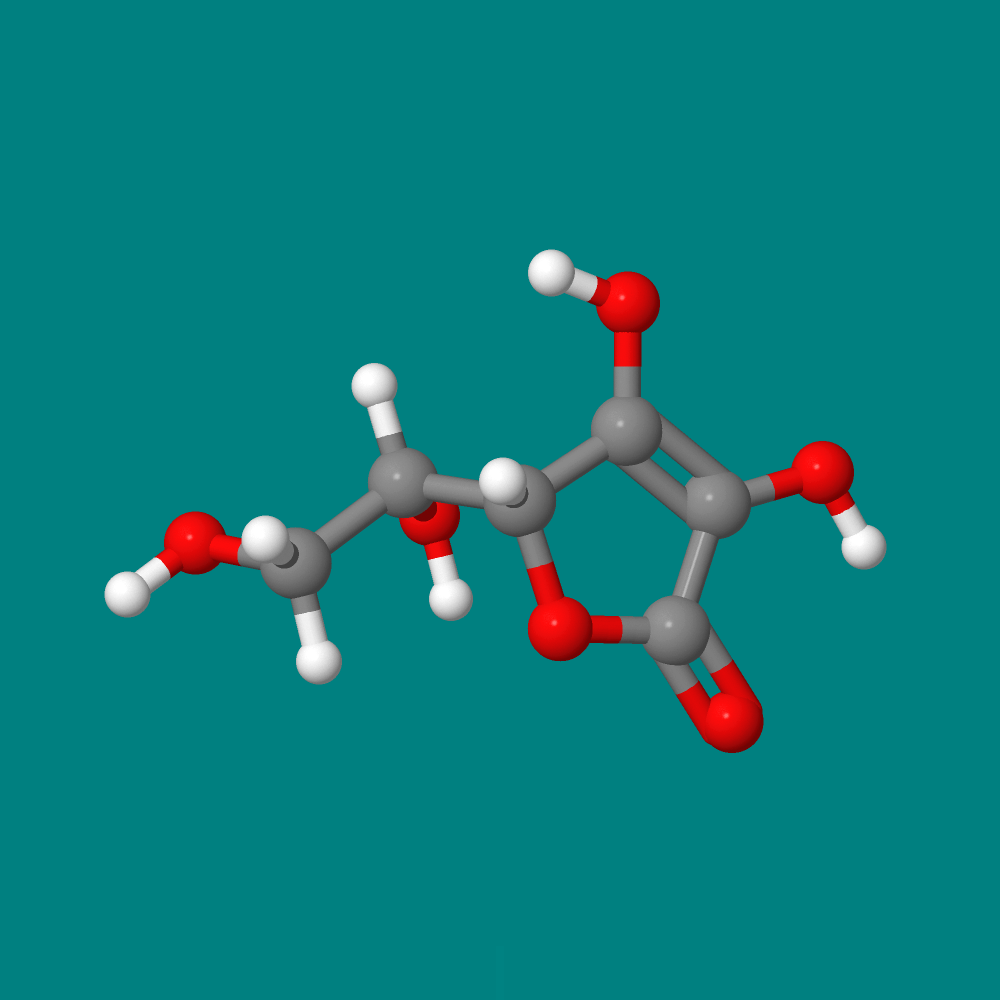
Essay Menu
Analysis of Vitamin C - Home Lab Activity #5
All actual activities in this chemistry series must be done with adult supervision!
CheMagic Virtual Molecular Model Kit

Introduction
The featured molecule in this essay is vitamin C (ascorbic acid). It is an essential nutrient responsible for the growth, development, and repair of all body tissues. Vitamin C is found naturally in a variety of fruits and vegetables and is often added to fortify fruit juices. The Recommended Daily Allowance (RDA) is 65 – 90 milligrams per day.
In this activity you will compare the relative amounts of vitamin C in fruit juices and a soft drink.
For this analysis, we will rely on a reaction between vitamin C (C6H8O6) and iodine (I2):
C6H8O6 + I2 --> C6H6O6 + 2HI
The method involves an analytical technique called a titration in which iodine is added dropwise to the sample containing vitamin C. As the I2 is added, it reacts with the vitamin C, and the iodine color disappears. Starch aids the visualization of the iodine. When all of the vitamin C is reacted, the iodine color remains. This stage of the titration is called the “endpoint”. The number of drops to reach the endpoint is related mathematically to the amount of vitamin C in the sample according to the above reaction.
Experimental Details: Analysis of Vitamin C
You will need the following household materials: Vitamin C tablet, eye dropper, spray starch, juice glass, small piece of white paper towel (about 1x1 inch), tincture of iodine, orange juice and some other juice for comparison (e.g. a juice fortified with vitamin C), and a lemon-lime soft drink such as Sprite® or 7-Up®.
Crush a vitamin C tablet and dissolve it in ½ cup of water. The binder that holds the tablet together will not dissolve, but this will not affect the experiment. Place a drop of iodine solution on a piece of paper towel and spray the spot very briefly with starch. Starch, which forms a dark blue-black complex with iodine, can be used to detect small amounts of iodine.
To illustrate the reaction between vitamin C and iodine, dip the paper towel into the vitamin C solution. The color of the spot should fade.
To perform the vitamin C analysis, add 1 oz (30 mL) of orange juice to a juice glass, spray the juice with starch, and mix. Add the iodine solution to the sample dropwise with stirring until the blue color remains. Record the number of drops to produce the color change.
Repeat for the other juice and the soft drink
DATA TABLE| Sample | Drops | mg Vit C in 6 oz |
|---|---|---|
| Orange Juice | ||
| Other Juice | ||
| Soft Drink |
Which sample contained the most vitamin C?
Given that 20 drops (1 mL) of iodine reacts with 14 mg of vitamin C, calculate the mg of vitamin C in 6 oz in each of the samples you analyzed. Which (if any) supply the RDA of vitamin C? To help with the calculations, read “The Math of Basic Chemistry” in the essay index (https:/chemagic.org/essays).
Cola soft drinks are difficult to analyze for vitamin C by this method, because the cola color is similar to the starch-iodine complex color. However, based on your observations above, would you expect a cola soft drink to contain vitamin C?
| Yes | No |
Our featured demo video is the Oscillating Reaction. It illustrates the formation of the iodine-starch complex. This video is featured on another essay, but it is so eye-catching, it’s fun to watch it again.
